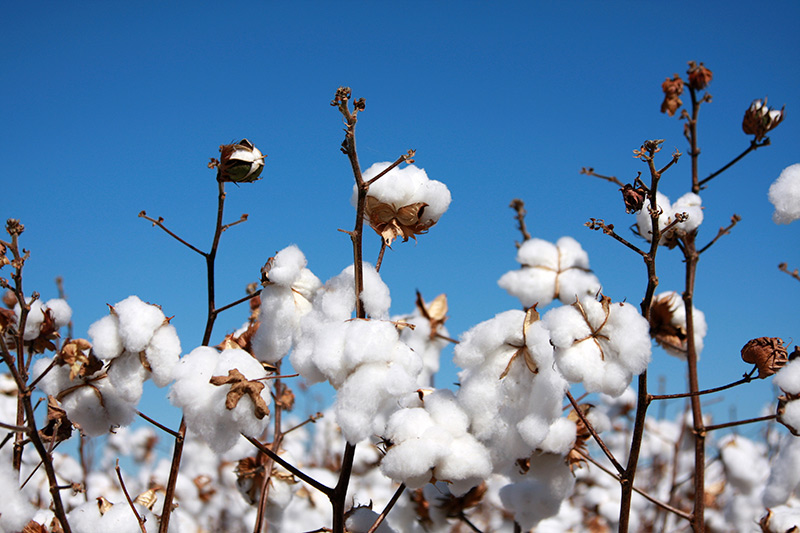Investing.com – Cotton futures were up for a third day on Tuesday, as concerns over deteriorating U.S. crop conditions and speculation China planned to increase cotton imports boosted prices.
On the ICE Futures U.S. Exchange, cotton futures for October delivery traded at USD1.3088 a pound during European morning trade, climbing 1.45%.
It earlier rose to a daily high of USD1.3104 a pound.
The U.S. Department of Agriculture said in its weekly crop progress report published Monday that approximately 39% of U.S. cotton crops were rated in ‘very poor’ to ‘poor’ condition as of June 19, up from 34% in the previous week.
Only 5% of the cotton crop was rated ‘very poor’ to ‘poor’ in the same week a year earlier.
Nearly 26% of U.S. cotton crops were rated ‘good’ to ‘excellent’, down from 28% in the previous week and significantly below the five-year average of 62% for this time of year.
In Texas, the largest cotton-growing state in the U.S., zero percent of the crop was rated in ‘excellent’ condition, while 35% was rated ‘very poor’ as extremely dry weather conditions over the past week damaged crops.
The U.S. is the world’s second largest cotton producer and the biggest exporter of the fiber.
Meanwhile, speculation that China planned to increase cotton imports also benefited prices.
Liu Xiaonan, deputy director of China’s National Development and Reform Commission said in an industry conference on Monday that China’s “dependence on cotton imports is likely to rise further in the future”, as domestic supplies decline and Beijing gives top priority to grain production.
Fang Yan, vice director of the NDRC's rural economy division said that, “There has been a decline in the enthusiasm of the Xinjiang government to promote cotton planting.”
The Xinjiang region is the country's top cotton producer, accounting for about 40% of China's total.
Elsewhere, wheat for July delivery jumped 1.25% to trade at USD6.6725 a bushel, corn for July delivery rose 1.3% to trade at USD7.1088 a bushel, while soybeans for July delivery added 0.75% to trade at USD13.4775 a bushel during European morning trade.
On the ICE Futures U.S. Exchange, cotton futures for October delivery traded at USD1.3088 a pound during European morning trade, climbing 1.45%.
It earlier rose to a daily high of USD1.3104 a pound.
The U.S. Department of Agriculture said in its weekly crop progress report published Monday that approximately 39% of U.S. cotton crops were rated in ‘very poor’ to ‘poor’ condition as of June 19, up from 34% in the previous week.
Only 5% of the cotton crop was rated ‘very poor’ to ‘poor’ in the same week a year earlier.
Nearly 26% of U.S. cotton crops were rated ‘good’ to ‘excellent’, down from 28% in the previous week and significantly below the five-year average of 62% for this time of year.
In Texas, the largest cotton-growing state in the U.S., zero percent of the crop was rated in ‘excellent’ condition, while 35% was rated ‘very poor’ as extremely dry weather conditions over the past week damaged crops.
The U.S. is the world’s second largest cotton producer and the biggest exporter of the fiber.
Meanwhile, speculation that China planned to increase cotton imports also benefited prices.
Liu Xiaonan, deputy director of China’s National Development and Reform Commission said in an industry conference on Monday that China’s “dependence on cotton imports is likely to rise further in the future”, as domestic supplies decline and Beijing gives top priority to grain production.
Fang Yan, vice director of the NDRC's rural economy division said that, “There has been a decline in the enthusiasm of the Xinjiang government to promote cotton planting.”
The Xinjiang region is the country's top cotton producer, accounting for about 40% of China's total.
Elsewhere, wheat for July delivery jumped 1.25% to trade at USD6.6725 a bushel, corn for July delivery rose 1.3% to trade at USD7.1088 a bushel, while soybeans for July delivery added 0.75% to trade at USD13.4775 a bushel during European morning trade.
